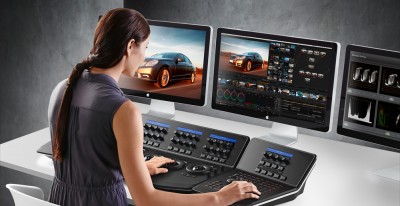News
DaVinci Resolve 10
Blackmagic Design unveiled new products at NAB, including two new cameras and 6G-SDI technology, as well as new versions of existing products.
An important update is the DaVinci Resolve color correction system, which has reached version 10:
Resolve Live
Both the full version and DaVinci Resolve Lite include new tools for use on set. Resolve Live will allow color corrections to be made directly from the camera output to the rig in real time. It is also possible to use the Thunderbolt connection on the Blackmagic Cinema Camera.
You can add as many nodes and corrections as you want and then save them to bring them to the final correction.
New editing functions
One of the issues that Blackmagic Design has focused on for this version is adding new editing features that allow for greater integration with other systems such as Avid, Final Cut Pro or Premiere Pro.
Therefore, multi-track editing is now possible, with up to 16 audio channels per clip and unlimited video and audio tracks in the timeline. In addition, audio can be synchronized or adjusted independently to the timeline and composite clips with multiple elements, including multiple audio and video tracks, are supported.
Trim functions (ripple, roll, slide and slip) have also been added and are dynamically displayed both in the timeline and in the viewer.
The DaVinci viewer has also been modified, allowing to display in a split screen the In and Out points of adjacent clips.
Another important new feature is the integrated titling tool, which allows you to create static titles and rollers (lower third, scroll and crawl) using multiple fonts, sizes, shadows and XY positioning.
In addition, in this version 10 you can edit s3D projects with full support for the right and left eyes of stereoscopic clips (both in the timeline and in the Media Pool), which will be automatically synchronized using the name and timecode.
Other new features influencing the edition are:
- Three- and four-point fit-to-fill edition.
- Effects for transforming, cropping and modifying video opacity.
- Extended support for AAF and XML.
- Bar generators and test patterns included.
- Audio level controls with track mixing.
Improvements for color correction
In terms of color correction, the most notable new feature is the support of OpenFX plugins, as well as the ability to add unlimited Power Windows in the same node.
The work in general with Power Windows has been renewed, adding presets for the combination of several, allowing to copy tracking data between them and improving the processing and drawing of PowerCurve Windows.
In the full version there have also been some changes, among which we can find a “Motion Effects” palette, Motion Blur, chrominance control for spatial noise reduction and temporal noise reduction.
Other new features affecting color correction include:
- Contrast and pivot controls in the “3-Way” and “Primary” palettes.
- Node based on PTZR controls.
- RGB/YUV Node Corrector.
- User selectable LUTs for viewer and scopes.
- The Media and Edit pages now include a zoom to adjust the selector.
- Improved blur with 10x magnification.
- Keyboard shortcut for full screen display.
- CinemaDNG and ARRI Raw decoder options at half or quarter resolution.
- The Render Cache metadata is now saved with the project.
- Projects can now be saved within project folders for better organization.
- Keyframe metadata in the timeline is now saved with Stills.
- Stills can be dragged between gallery pages.
EasyDCP integration
DaVinci Resolve 10 has an EasyDCP integration whereby, after purchasing a license, it is possible to render directly to a Digital Cinema Package (DCP). This option is available for both Mac and Windows.
DaVinci Resolve 10 will be available as a free upgrade in the third quarter of this year.


